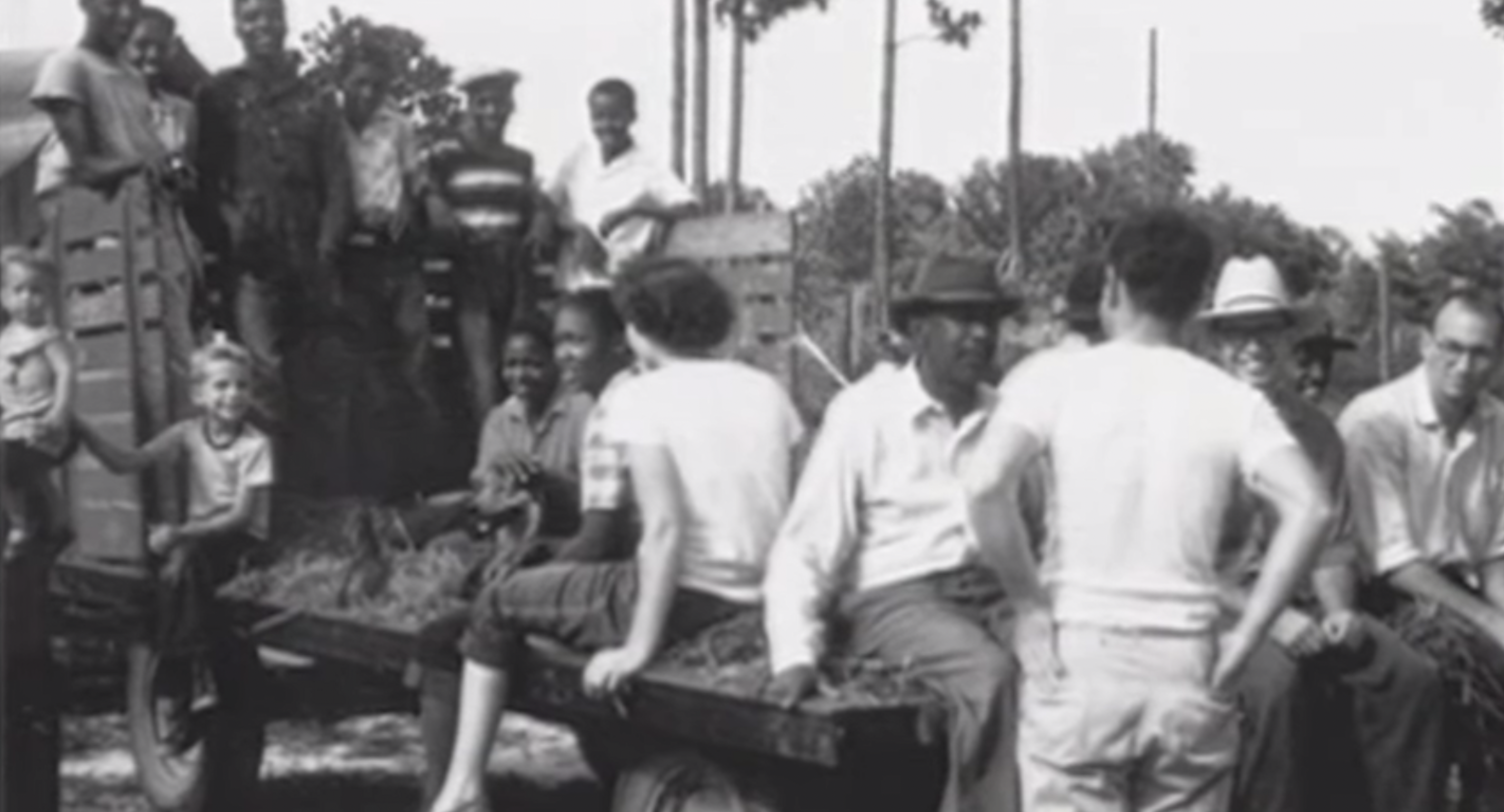By Lynn Burnett
Born in a small town in Georgia in 1912, Clarence Jordan was troubled by the poverty he witnessed amongst the local sharecroppers. In college, he pursued a degree in agricultural science, hoping to help sharecroppers grow more abundant and nutritious food for themselves. However, Clarence viewed the sharecropping system as impoverished in another way: a system so unjust could only have arisen from a great spiritual poverty within American society.
This belief guided Clarence into the Southern Baptist Theological Seminary. He was ordained as a Southern Baptist minister in 1934, and earned a Ph.D. in the Greek New Testament in 1938. In 1942, he founded a farming community in southern Georgia, based on his understanding of what a community grounded in Jesus’ teachings would look like. He named the community Koinonia (κοινωνία), from the Greek word for communing together. Koinonia referred to the community of Jesus’ followers after his death. Part of their spiritual practice was a form of communal ownership: whatever one member owned was shared freely with all. Koinonia Farm followed this example of early Christian community: in a radical departure from American norms, private ownership held little sway on Clarence Jordan’s Koinonia Farm.
A second radical departure was that Koinonia Farm was interracial. For Clarence, the commitment to interracial living was part of the commitment to Christian faith. In his words: “God is the father of men, irrespective of their race. We agreed that we would hold to that, regardless of the consequences.” For ten years, there were surprisingly few consequences to the interracial living experiment in the Deep South. There was some controversy when it was discovered that Koinonia paid its Black and White workers the same wages. But for the most part, the interracial community flew under the radar.
However, once the civil rights movement began, fear and anger rippled through the White South, and Koinonia soon became a target. The farm faced a crippling economic boycott, and members were excommunicated from their churches. Vigilantes came onto the property and destroyed cars, cut down hundreds of trees, stole crops, set fires, burned crosses, and sprayed machine gun fire into the homes. Koinonia’s roadside market was bombed numerous times. The interracial Christian farm also became a target of the McCarthyist era, in which anything associated with racial equality was deemed a “Communist threat.” During these difficult years, the community stacked piles of wood around the houses to stop bullets. Neighboring Black farmers would sneak fertilizer into Koinonia after dark so the farm could continue to produce crops.
The members of Koinonia Farm’s commitment to authentic Christian community helped them hold on… for a while. 60 members endured the first period of violence together, but by 1968 only two families remained. Farming was no longer viable. As Koinonia looked for a new mission, the region’s dire need for humane housing stood out. Clarence Jordan marked off 42 half-acre plots on Koinonia with his friend Millard Fuller, and they began building houses. The first house went to a Black family who was living in a shack just up the road from Koinonia. Inspired by this effort, Millard and his wife Linda went on to found Habitat for Humanity, which is still headquartered in Georgia.
Starting in the 1940s, Clarence Jordan also began composing his Cotton Patch series, in which he translated original Greek transcripts of the New Testament into stories that took place in contemporary Georgia. Rome became Washington D.C.; Jerusalem became Atlanta. In the Cotton Patch series, Jesus is not crucified but lynched. The translations are also full of earthy humor: Upon his resurrection, Jesus appears and says “Howdy.”Clarence spent much of his time in his writing shack on Koinonia Farm, where he died in 1969, while working on a sermon.
Koinonia Farm remains a thriving intentional Christian community to this day.
Additional Resources
Koinonia Farm main website.
Articles
New Georgia Encyclopedia entry.
Charles O’Connor: A Rural Georgia Tragedy: Koinonia Farm in the 1950s.
Videos
Clarence Jordan Tells The Koinonia Story.
Briars in the Cotton Patch: The Story of Koinonia Farm.
Books
Frederick L. Downing: Clarence Jordan: A Radical Pilgrimage in Scorn of the Consequences.
Clarence Jordan: Clarence Jordan: Essential Writings.
Clarence Jordan:Cotton Patch Gospel: The Complete Collection.
Dallas Lee: The Cotton Patch Evidence: The Story of Clarence Jordan and the Koinonia Farm Experiment (1942-1970).
Ann M. Trousdale: Cotton Patch Rebel: The Story of Clarence Jordan.
